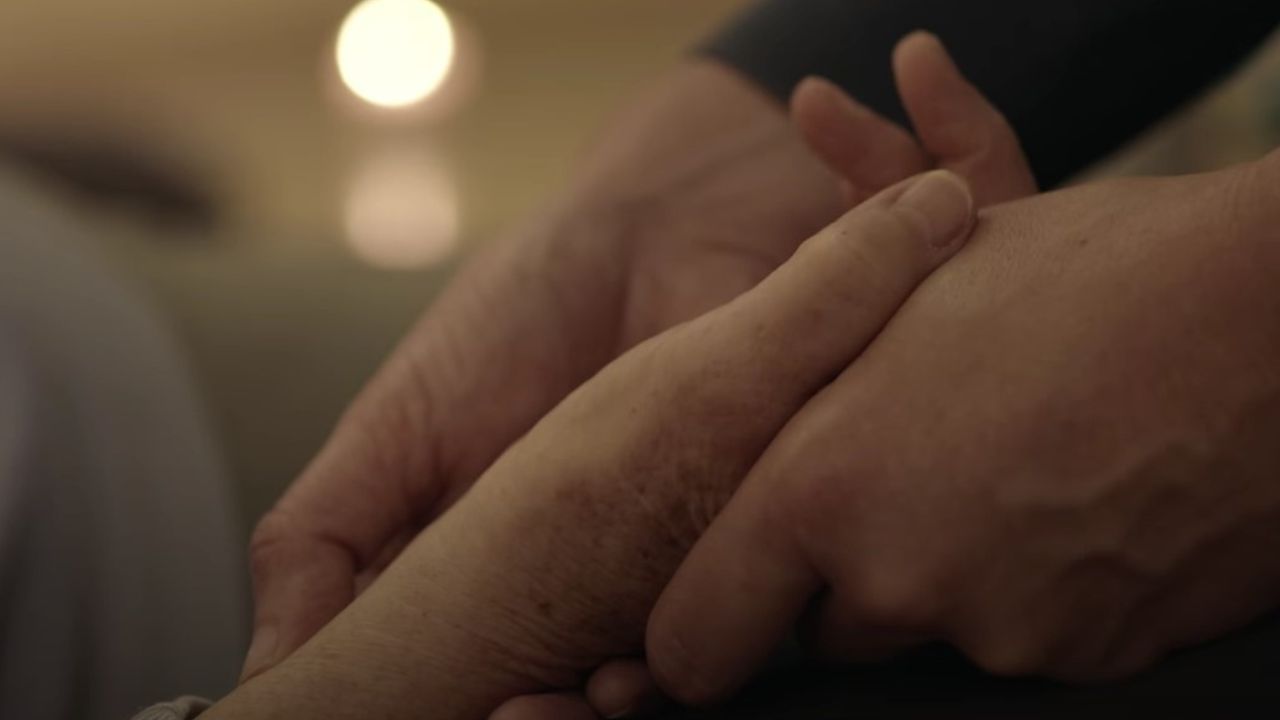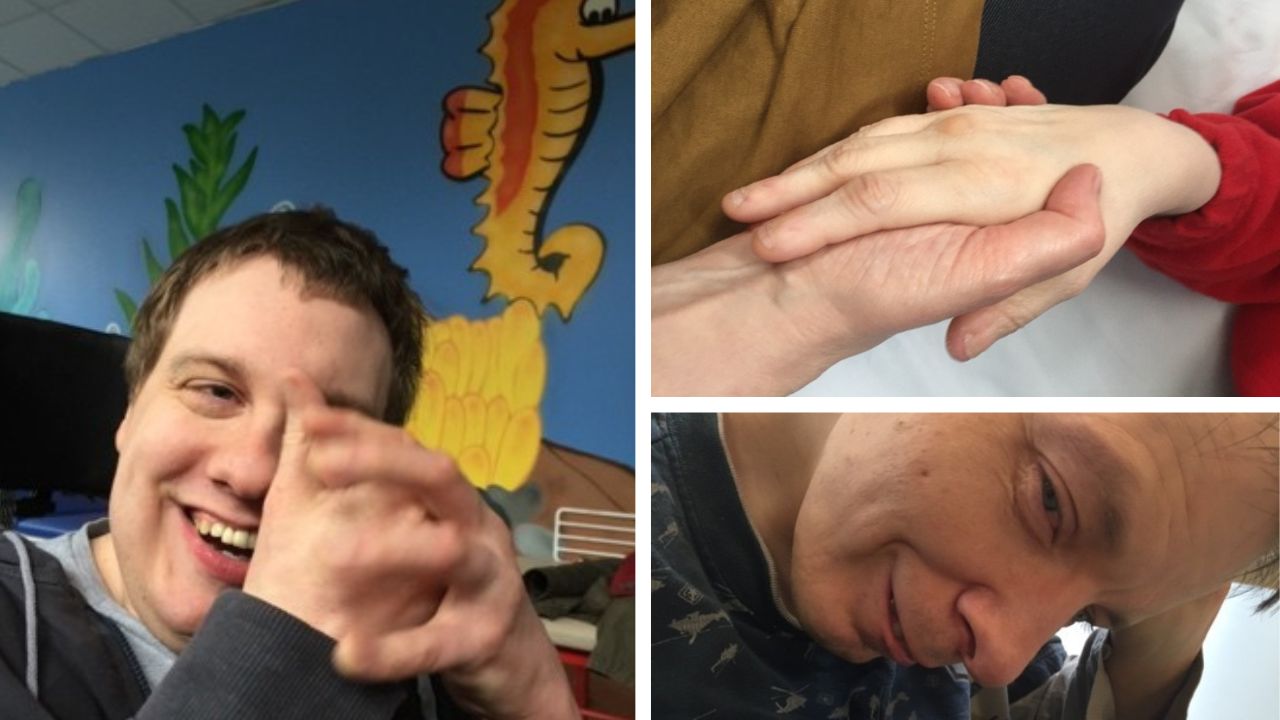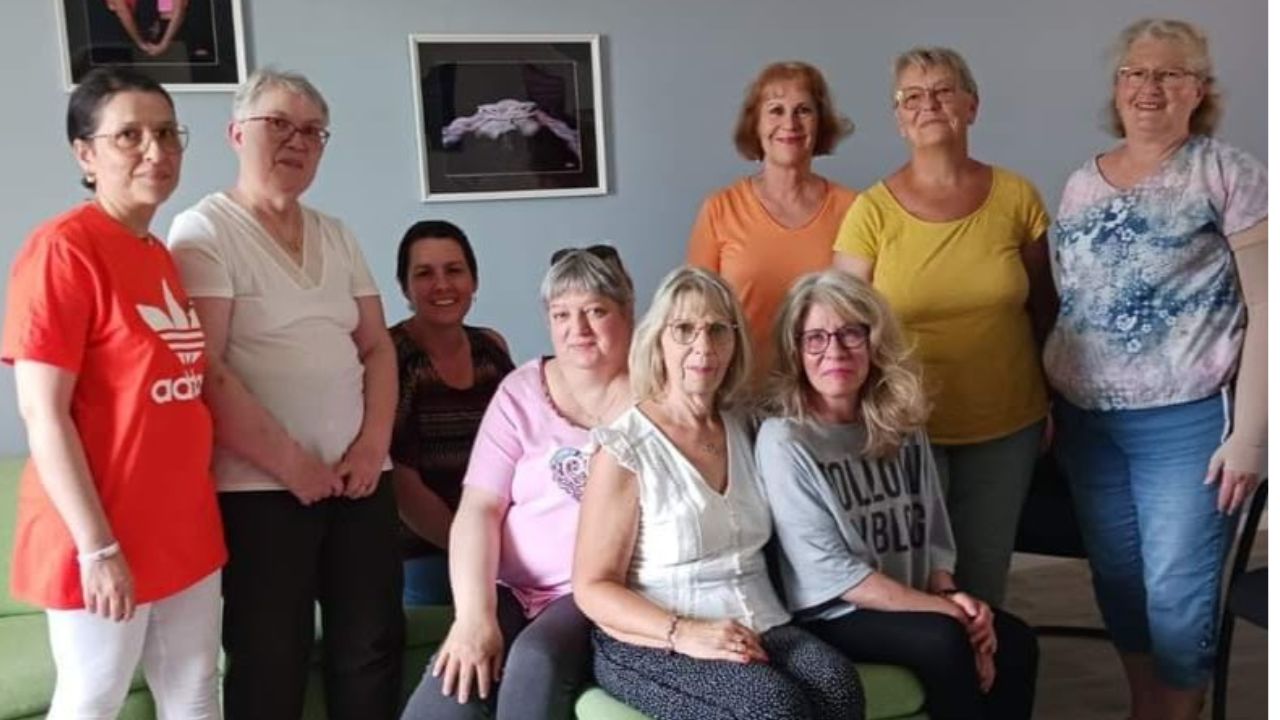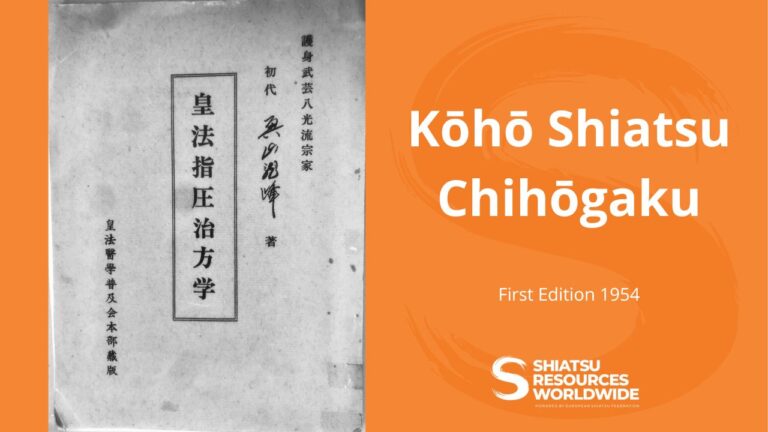
“Kōhō Igaku” in Japanese represents a synthesis of Kampō medicine and Oriental medical methods – not merely as an influence of them, but as a system that rises above and transcends them, creating a unique medical approach. Its ultimate aspiration is to save lives through a special medical method that delivers rapid effects by integrating the healing arts. This medicine aims to restore individuals to full vitality, fostering swift progress to benefit the world.
The preface of the book contains some interesting essays written by Yoshitaka Wada, Sugimoto Shizuo, Fujida Kinjyū, Kobayakawa Akinori and Ōura Kōshō
Kōhō Shiatsu (皇法指圧) is one of the earliest Shiatsu systems developed in Japan. It was designed to be taught alongside Hakkō-ryū Jūjutsu, as both the martial and medical arts are meant to be learned together – each complementing and enhancing the other.
Hakkō-ryū Jūjutsu self-defense techniques are designed to disrupt the meridians and nerves of an attacker’s body, causing intense pain. This allows the practitioner to control the opponent with minimal force, avoiding unnecessary injury. Okuyama Sensei always emphasized that a true Hakkō-ryū master possesses the ability to both harm and heal with just a single finger.
Beyond its martial applications, Hakkō-ryū Jūjutsu also serves to protect the body from illness, injury, and fatigue. In addition to its secret martial arts techniques, it incorporates a therapeutic method known as Kōhō Shiatsu, which applies acupressure to the meridians. This healing practice was developed by Okuyama Ryuho, the school’s founder, and is based on Koho medicine, a form of therapy established by Dr Hirata Haruchiki (平田内蔵吉). Hakkō-ryū seamlessly integrates martial arts and medicine, demonstrating that they are fundamentally interconnected.
A defining characteristic of Hakkō-ryū Jūjutsu is the complete abandonment of physical strength. Practitioners remain fully relaxed and apply techniques effortlessly to defend themselves. While many martial arts focus on overpowering or defeating an opponent, Hakkō-ryū emphasizes using the attacker’s own strength against them. By striking a vital point on the meridians, a practitioner can instantly freeze, stop, immobilize or control an opponent’s movements.
Unlike modern Judo, where a physically smaller person may struggle against a much larger opponent, Hakkō-ryū Jūjutsu eliminates the disadvantages of size and strength. Instead, it prioritizes, quick and efficient maneuvers over brute force, proving that skill and technique can triumph over sheer power.
About the Author
Okuyama Ryuho (1901–1987) was a student of Sokaku Takeda, a Shiatsu practitioner, and the founder of Hakkō-ryū (八光流) or Hakkō-ryū Jūjutsu (八光流柔術). This style of Jūjutsu, derived from Daitō-ryū, focuses on pain-sensitive Qi meridian points, allowing a defender to inflict severely distracting pain on an attacker without causing serious injury.
Shodai Soke Okuyama Ryuho established the definitive methods for both the Hakkōryū Jūjutsu and Kōhō Shiatsu Igaku systems. He was born in Yamagata Prefecture in 1901. At the age of five, he contracted meningitis and suffered greatly. However, he recovered through traditional Oriental medicine, sparking his lifelong interest in its theory and practice.
After graduating from the Tokyo School of Government, he moved to Hokkaido, where he founded and operated a Shiatsu clinic. During this period, he traveled extensively, studying traditional Oriental medicine and martial arts under many renowned teachers.
Following years of intensive medical studies, he attained a high level of mastery in traditional Oriental medicine and founded a private school, “Kōhō Gijuku,” in Asahikawa, Hokkaido, during the early Shōwa period. Through his dedication, he gained recognition, trained numerous therapists and gave lectures throughout the city. Around 1932, he was appointed president of the Asahikawa Therapists Association due to his expertise, knowledge and commitment to traditional Oriental medicine.
Eventually, Shodai Soke Okuyama Ryuho developed his own distinctive martial art and medical systems, which he named “Kōhō Shiatsu” and “Hakkōryū Jūjutsu.” Before the end of World War II, he returned to Yamagata Prefecture, staying at Mount Haguro, a sacred site where Shinto priests and Shugendō ascetics study and meditate. During his time there, he refined the techniques of Hakkōryū Jūjutsu and Kōhō Shiatsu.
In 1947, after the war, he relocated once again and established a private school, Hakkō Juku Hombu Dōjō, in Omiya City (now Saitama City), Saitama Prefecture, where he continued to teach Hakkōryū Jūjutsu and Kōhō Shiatsu until he died in 1987.
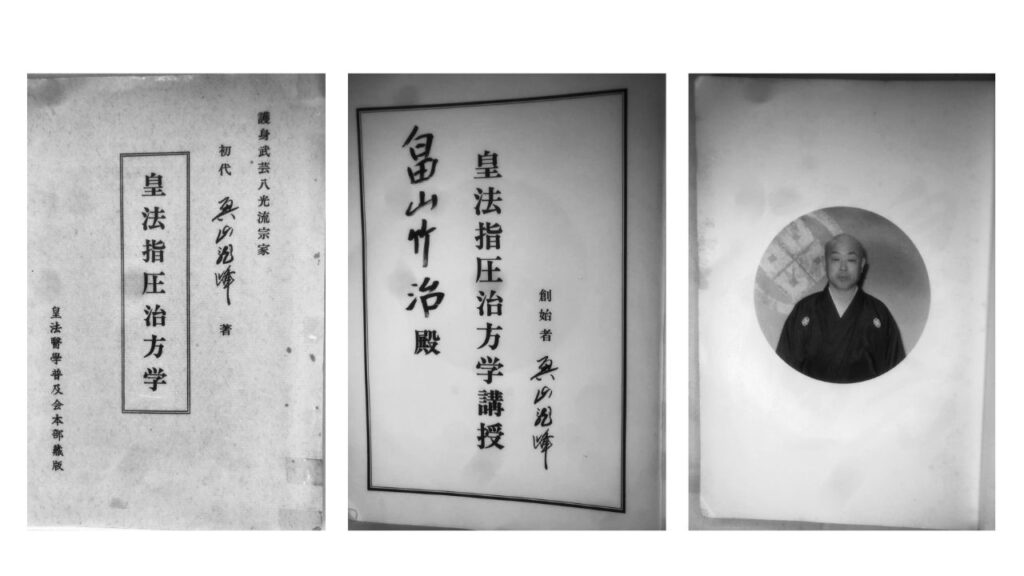
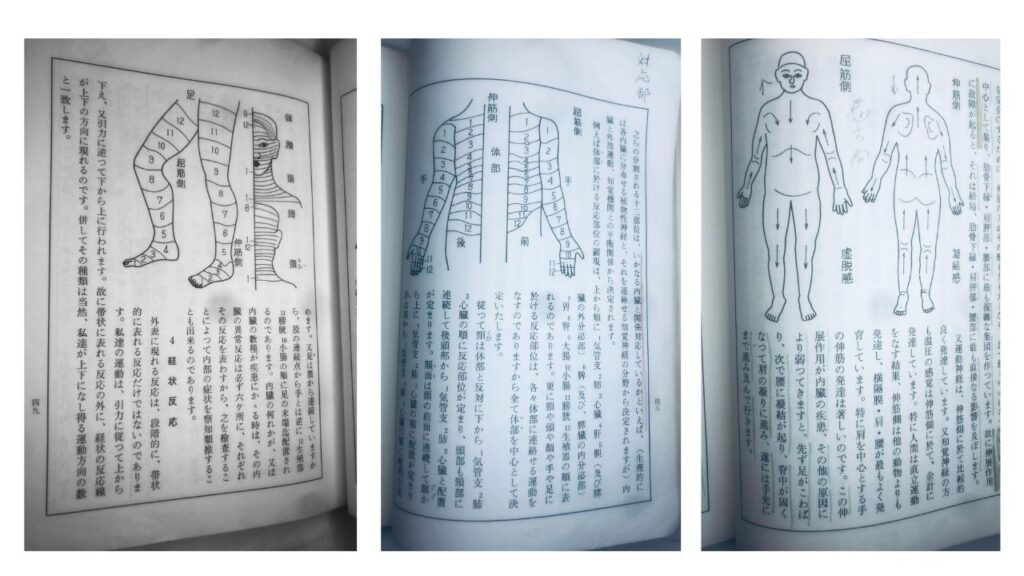
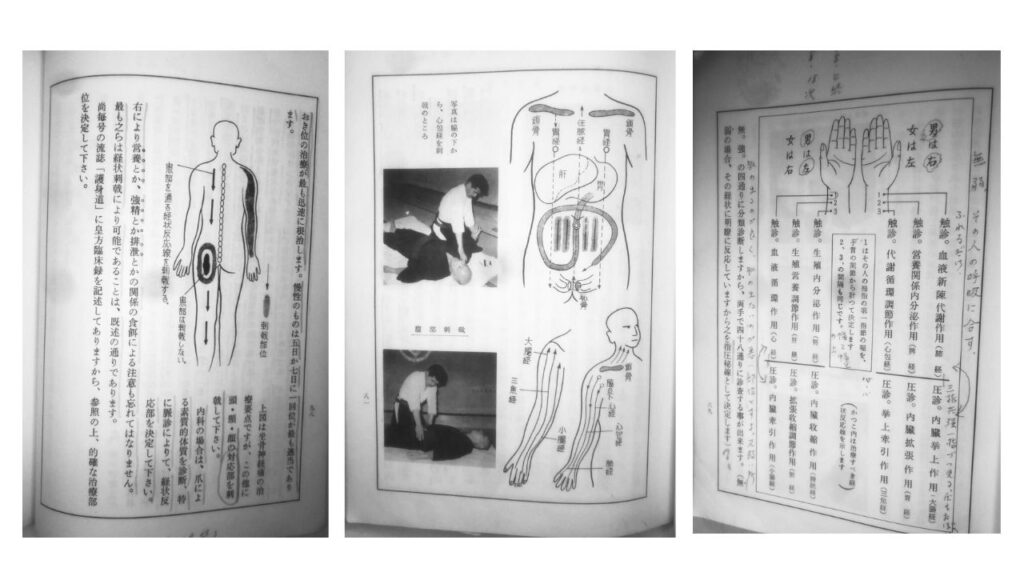
Kōhō Igaku Fukyūkai Honbun Zōhan Edition
First edition: 29th year of the Showa Era, 1954
Purpose: Healing through imperial methods (Kōhō)
